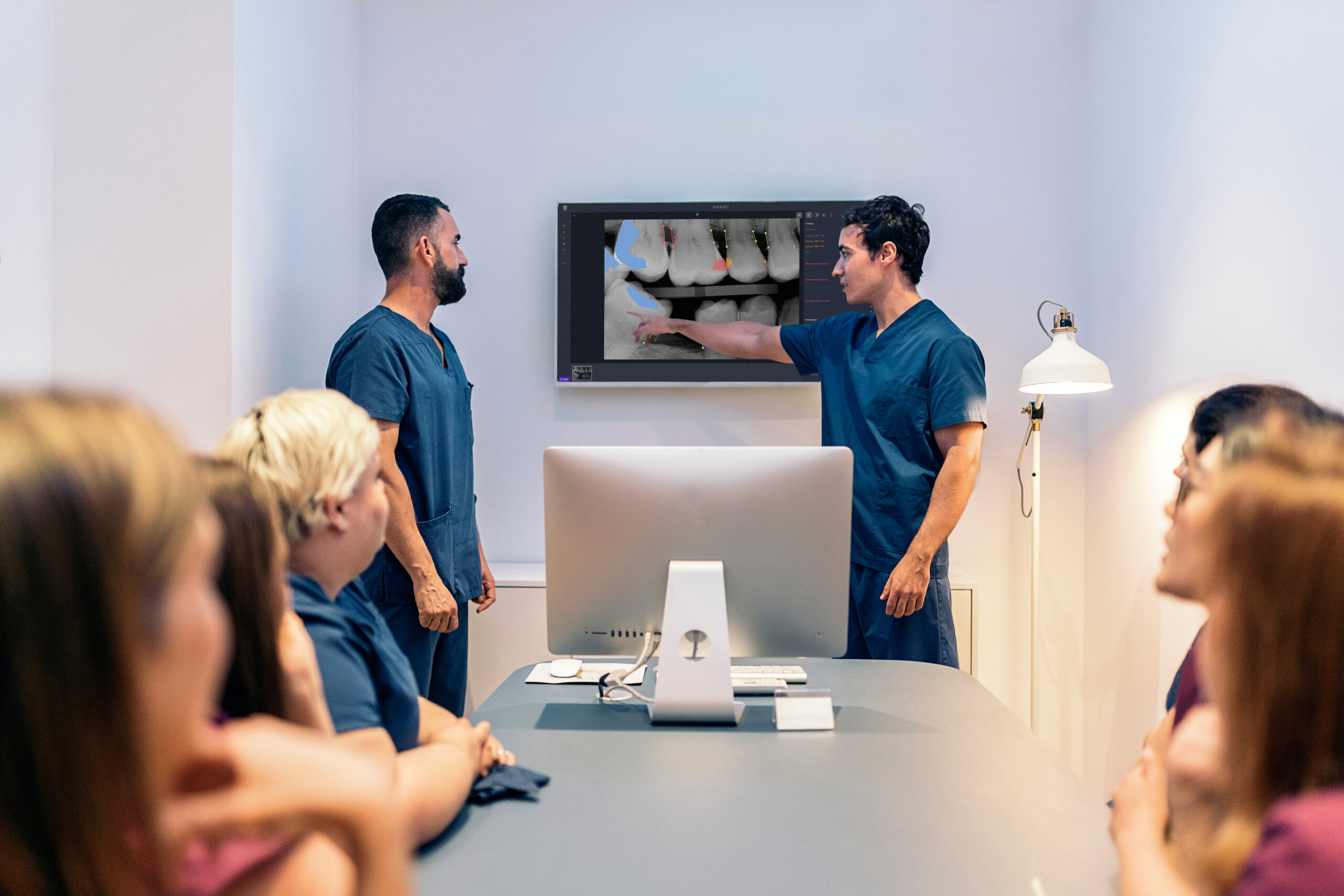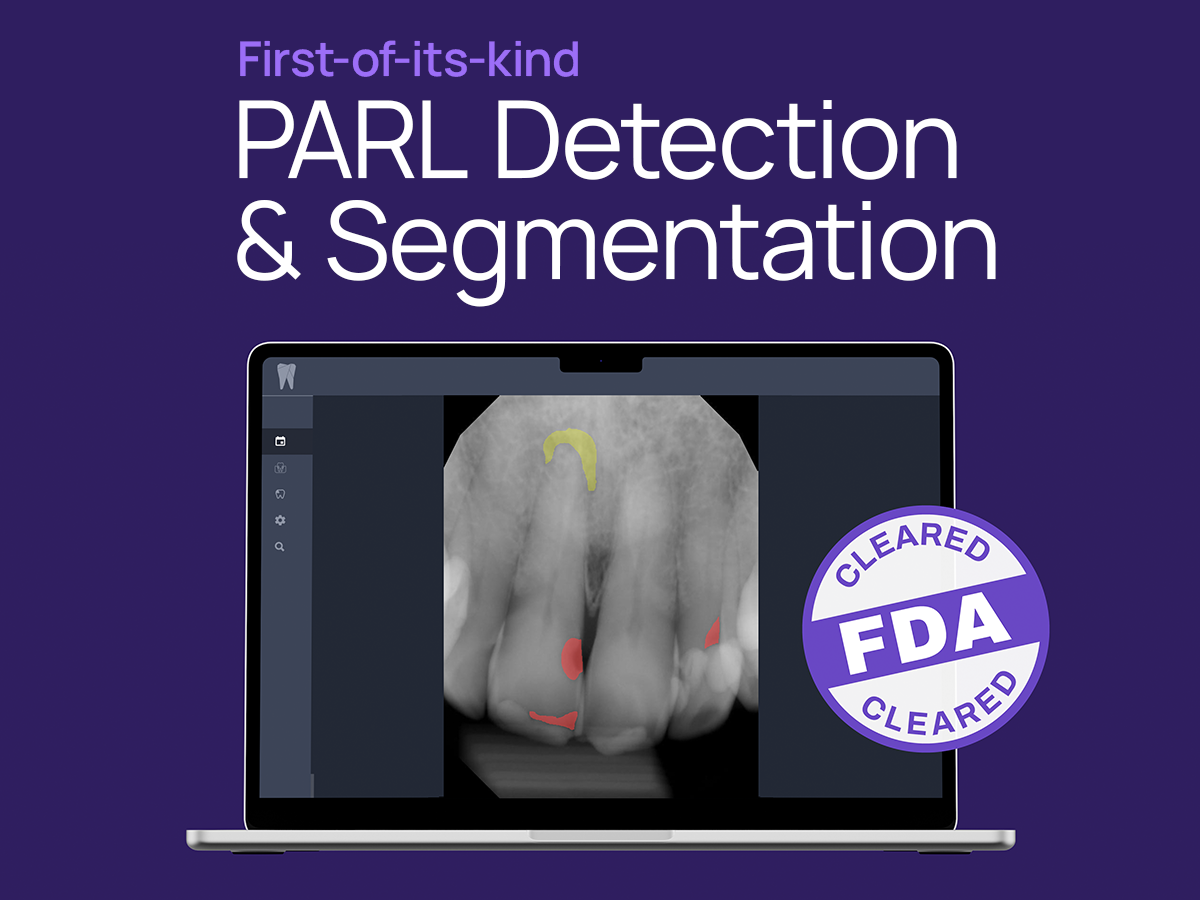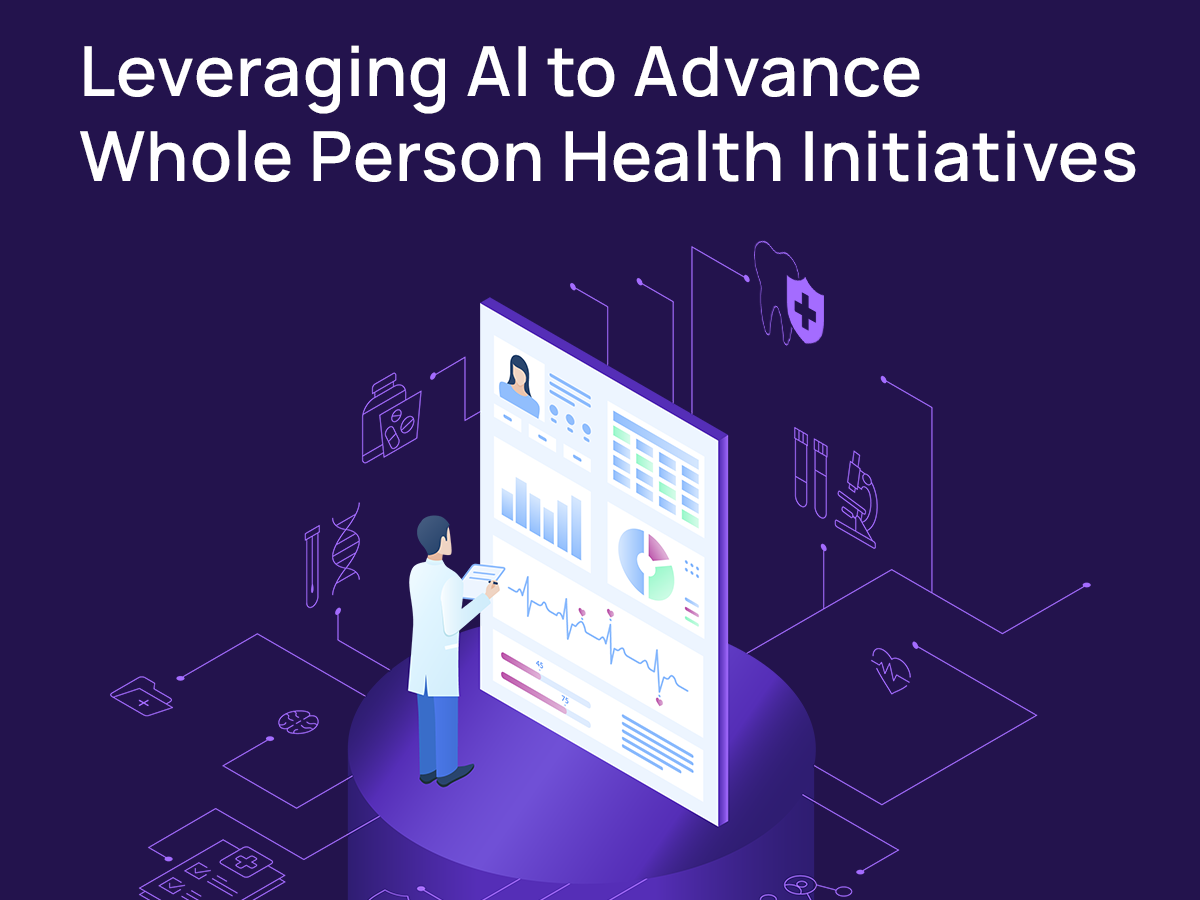Leadership starts with alignment. Whether you’re a private dentist who employs a hygienist, or the executive of a dental group with hundreds of providers, it’s important to have everyone on the team aligned both clinically and philosophically.
That can be difficult. Depending on their training and experience, clinicians can look at the same set of X-rays and reach completely different conclusions. The most famous example of this was a 1997 Reader’s Digest article called “I Went to 50 Different Dentists and Almost All of Them Gave Me a Different Diagnosis.” The author received treatment plans varying from $500 to $29,850.
Dental leaders are now turning to AI to create consistent standards of care to ensure everyone knows the benchmarks established for treatment recommendations.
AI: Standards of Care Based on Objective Findings
AI computer models have trained on millions of radiographs to identify pathologies such as caries and to quantify bone level measurements that can aid in the diagnosis of periodontal disease.
Now the lead dentist or Chief Clinical Officer can set standards of care based on the objective findings.
For example, insurance companies require bone loss to be present for D4341 and D4342 procedures. With Overjet, measurements from the CEJ to the Crestal Bone are presented in red when over 3 mm on bitewings or when the percentage of bone loss is 13% or greater on a PA. According to the American Academy of Periodontology guidelines, these measurements indicate bone loss.
The practice or dental group can set a standard of care that says when bone loss is at 3 mm or greater, and periodontal probings measure at least 4 mm, then scaling and root planing will be indicated.
This keeps everyone aligned and standardizes the treatment protocols, which reduces disagreements between providers and creates a consistent patient experience.
AI Findings are Directional, Not Diagnostic
It’s important to note that AI-generated findings are directional, not diagnostic. Only a dentist can diagnose.
But AI-powered X-ray analysis and annotations can eliminate some of the subjectivity in diagnosis. Now providers can point to the quantified, evidence-based data to support their treatment recommendations, and the treatment plan coordinator can be confident in answering any questions the patient may have.
Having consistency between providers helps ensure patients have a consistent experience, too. Have you ever had a patient that waited until the dentist left and then asked the treatment coordinator, “What do you think? Do I really need to have that done?”
When the patient hears the same information from multiple people, and sees the objective, third-party findings from AI, it increases their trust in the dental care that has been prescribed. And that consistency in care leads to greater case acceptance, and a higher likelihood the patient will recommend the practice to family and friends.











